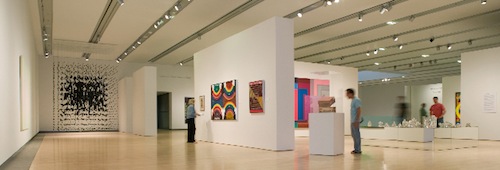A thriving arts and culture scene is a major factor—some would say THE major factor—if Downtown Phoenix is going to continue its rise. But slashed state funding, harder-to-secure donor donations and smaller audiences have wreaked havoc on too many organizations now teetering on the edge.
The good news is the curtain is rising on some creative strategies and marketing that could set a new stage for our arts and culture groups. Alliance for Audience—the organization behind showup.com—has been working with TRG
, a Colorado-based consulting firm that helps arts and cultural organizations grow revenues and patronage.
NEW PATRON DATABASE
For the first time, they have assembled a central database of Arizona’s arts and cultural patrons, derived from lists submitted by the 49 participating organizations to date.
TRG executives were in town September 8, sharing their insights with more than 70 arts and cultural representatives gathered at the Phoenix Art Museum to hear their findings from the first nine months of the program:
■The database comprises 693,504 unique households and almost one million patron transactions. That means that one in four Arizona households is represented—and has been involved, at least once, in arts and cultural activities here.
■ The performing arts category accounted for the large percentage of households,or more than 200,000.
■ There were representatives from all 50 states in the database, which has strong implications for “cultural tourism.”
■ The median age in Arizona’s patrons skewed slightly higher than in other areas of the country (57 years old, compared to 55 in Los Angeles).
■ 67% of households in the database were in Maricopa County, 11% from other parts of Arizona, 3% from California and 19% from other states.
■ Only 21% are multi-buyers.That means that almost 80 percent are found in the database of only one organization.
NEED FOR MULTI-BUYERS
It is the last statistic that has the arts and cultural sector talking.
That’s because, according to TRG President Rick Lester, “multi-buyers are a sign of health for a community. Unique buyers don’t stick around.”
And he has the statistics to prove it. When unique buyers are converted to multi-buyers, the attrition rate drops from 80% to 50%. Among the solutions: cross-marketing and list-sharing, by getting permission from another participating arts or cultural organization to access its database for marketing purposes.
That may be more difficult for some groups than others, especially when they view their database as highly proprietary and worry about other organizations “poaching” their audience. But, in reality, Vice President Will Lester pointed out that “a rising tide raises all ships” and it’s to the entire community’s advantage to create “culture vultures.”
MORE TARGETED MARKETING
“The sharing of lists electronically is not something people can ignore. If we are able to retain people to attend more than one event, that means a tremendous amount to the arts and culture community,” said Shelley Cohn, former executive director of the Arizona Commission on the Arts and Alliance for Audience board chair.
Phoenix Theatre has already been able to put database mining to good use by getting a sharper view of their supporters’ demographics and, consequently, fine-tuning its marketing efforts, according to Vincent VanVleet, managing director. Based on what they’ve learned, they are now doing smaller, better targeted and more frequent mailings and getting more favorable results.
“The Age of Reason has come to arts and culture marketing,” said Matt Lehrman, executive director of Alliance for Audience. “Organizations can make decisions now about marketing to and serving audiences from facts, rather than guts—that’s incredibly powerful.”











I’m hoping this is as fantastic as it sounds. It has the potential of a “stand-off”, i.e. “I’ll show you mine if you show me yours”, but if these groups got over themselves and looked at those stats, they’d see the argument for it.
My only question is whether only the “big-box” players(PAM, Herberger, Heard, MIM et al) will be able to use this, or if in fact little independent guys (read as “No Festival Required Independent Cinema” will have access to submissions. My gut feeling is if Matt is involved, I would hope so.